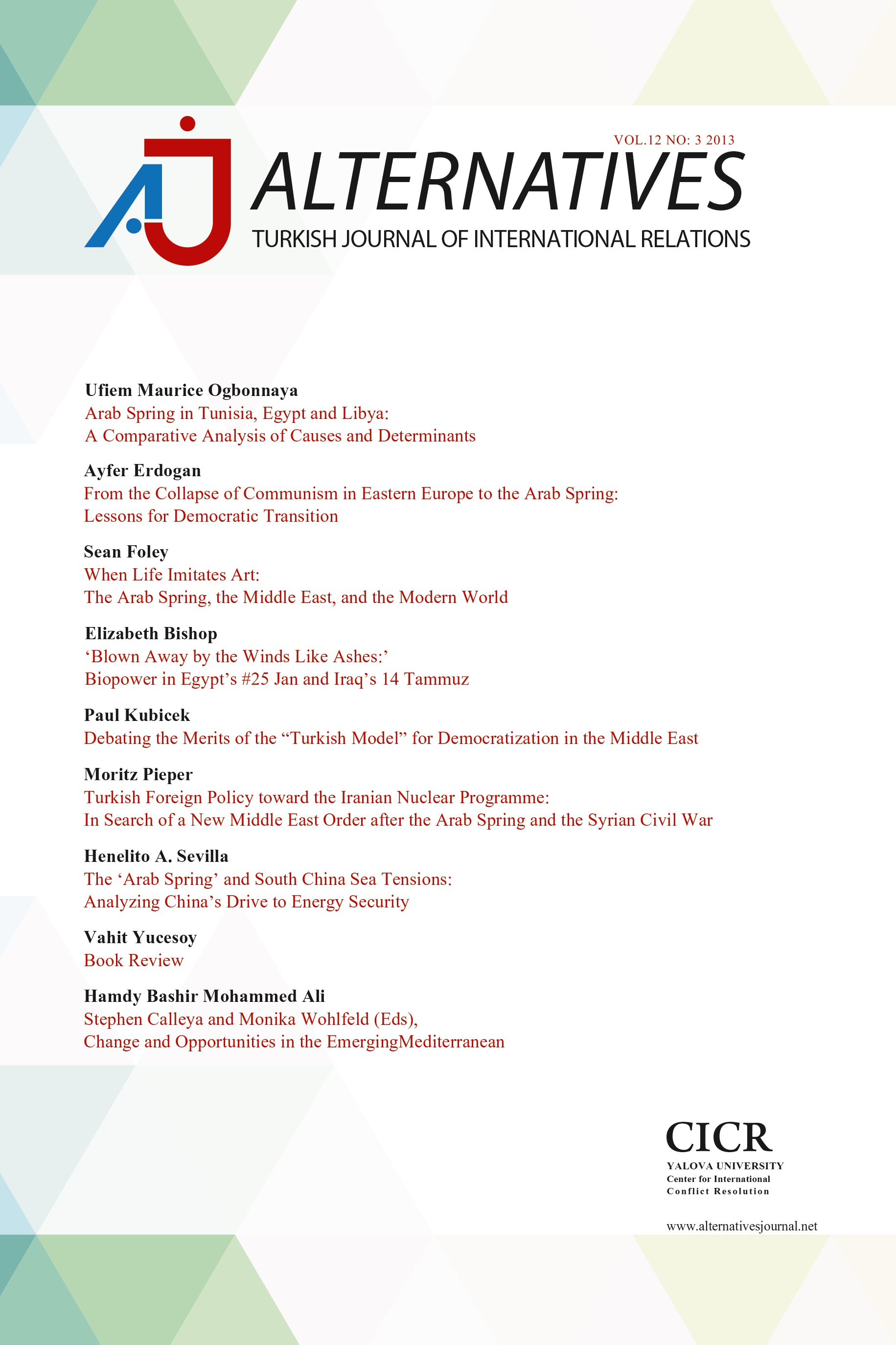Religion as a Site of Boundary Construction: Islam and the Integration of Turkish Americans in the United States
Religion as a Site of Boundary Construction: Islam and the Integration of Turkish Americans in the United States
Keywords:
-,
___
- Ahmad, Iftikhar, and Michelle Szpara. 2003. Muslim Children in Urban America: The New York City Schools Experience. Journal of Muslim Minority Affairs 23 (2):295-301.
- Alba, Richard D. 2005. Bright vs. blurred boundaries: second generation assimilation and exclusion in France, Germany and the United States. The Ethnic and Racial Studies 28 (1):20-49.
- Alba, Richard D., and Victor Nee. 2003. Remaking the American mainstream: assimilation and contemporary immigration. Cambridge, Mass.: Harvard University Press.
- Armour, Rollin S. 2002. Islam, Christianity, and the West: a troubled history. Maryknoll, N. Y.: Orbis Books.
- Armstrong, Karen. 2002. Islam: a short history. Modern Library ed, Modern Library chronicles. New York: Modern Library.
- Bozorgmehr, Mehdi, and Anny Bakalian. Forthcoming. Closure of Muslim Philanthropic Organizations after 9\11. In Encyclopedia of Racism in the United States, edited by P. G. Min. New York.
- Camarota, Steven. 2002. Immigrants from the Middle East: A Profile of the Foreign-born U.S. Population from Pakistan to Morocco. The Journal of Social, Political and Economic Studies 27 (3):315-340.
- Camarota, Steven A. 2002. Immigrants from the Middle East: A Profile of the Foreign-born U.S. Population from Pakistan to Morocco. The Journal of Social, Political and Economic Studies 27 (2):315-340.
- Coleman, Terry. 1987. Going to America. Baltimore: Genealogical Pub. Co. Curtis, Edward E. 2006. Black Muslim religion in the Nation of Islam, 1960-1975. Chapel Hill: University of North Carolina Press.
- Eck, Diana L. 2001. A new religious America: how a "Christian country" has now become the world's most religiously diverse nation. 1st ed. San Francisco: HarperSanFrancisco.
- Haddad, Yvonne Yazbeck, and John L. Esposito. 1998. Muslims on the americanization path? South Florida-Rochester-Saint Louis studies on religion and the social order; v. 19. Atlanta, Ga.: Scholars Press.
- Kalin, Ibrahim. 2001. Islam and the West: Deconstructing Monolithic Perceptions--A Conversation with Professor John Esposito. Journal of Muslim Minority Affairs 21 (1):155-163.
- Kaya, Ilhan. 2004. Turkish American Immigration History and Identity Formations. The Journal of Muslim Minority Affairs 24 (2):295-208.
- ———. 2005. Identity and Space: The Case of Turkish Americans. Geographical Review 95 (3):425-440.
- Kimball, Charles. 2004. Toward a More Hopeful Future: Obstacles and Opportunities in Christian-Muslim Relations. The Muslim World 94 (July):377-385.
- Lockman, Zachary. 2004. Contending visions of the Middle East: the history and politics of Orientalism, The contemporary Middle East; 3. Cambridge; New York: Cambridge University Press.
- Maggard, Kasey Q. The role of social capital in the remittance decisions of Mexican migrants from 1969 to 2000. Federal Reserve Bank of Atlanta 2004 [cited. Available from http://www.frbatlanta.org/invoke.cfm?objectid=76162DF0-F09F-617D3FEEE958CA94AC90&method=display.
- Mamdani, Mahmood. 2002. Good Muslim, Bad Muslim: A Political Perspective on Culture and Terrorism. American Anthropologist 104 (3):766-775.
- Moore, Kathleen. 2002. 'United We Stand': American Attitudes toward (Muslim) Immigration Post-September 11th. The Muslim World 92:39-57.
- Muscati, Sina. 2003. Recocsructing 'Evil': A Critical Assessment of Post-September 11 Political Discourse. Journal of Muslim Minority Affairs 23 (2):249-269.
- Nyang, Sulayman. 1997. Seeking the religious roots of pluralism in the United States of America: an American Muslim perspective. Journal of Ecumenical Studies 34 (3):1-10.
- Peek, Lori. 2003. Reactions and Response: Muslim Students' Experiences on New York City Campuses Post 9\11. Journal of Muslim Minority Affairs 23 (2):271-283.
- Portes, A. 1994. Introduction: Immigration and its aftermath. International Migration Review 28 (4):632-639.
- Portes, Alejandro. 1995. The economic sociology of immigration: essays on networks, ethnicity, and entrepreneurship. New York: Russell Sage Foundation.
- Said, Edward W. 1978. Orientalism. 1st ed. New York: Pantheon Books.
- ———. 1997. Covering Islam: How the Media and the Experts Determine How We See the Rest of the World. Rev. ed. New York: Vintage Books.
- Shaheen, Jack G. 1997. Arab and Muslim stereotyping in American popular culture. Washington, D.C.: Center for Muslim-Christian Understanding, History and International Affairs, Edmund A. Walsh School of Foreign Service, Georgetown University.
- ———. 2001. Reel bad Arabs: how Hollywood vilifies a people. New York: Olive Branch Press.
- Takim, Liyakati. 2004. From Conversion to Conservation: Interfaith Dialogue in Post 9-11 America. The Muslim World 94 (July):343-355.
- Taylor, Gary, and Helen Hawley. 2003. Freedom of Religion in America. Contemporary Review 282:344-350.
- Wuthnow, Robert, and Conrad Hackett. 2003. The Social Integration of Practitioners of NonWestern Religions in the United States. Journal for the Scientific Study of Religion 42 (4):651-667.
- ISSN: 2146-0809
- Yayın Aralığı: Aylık
- Yayıncı: Yalova Üniversitesi
